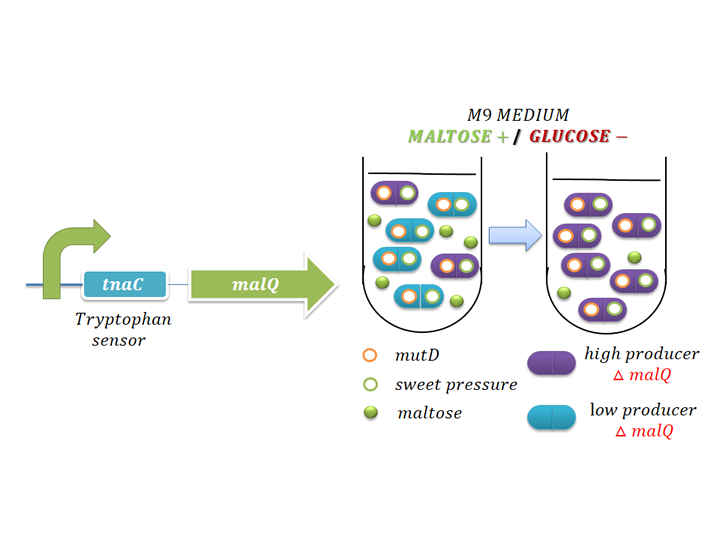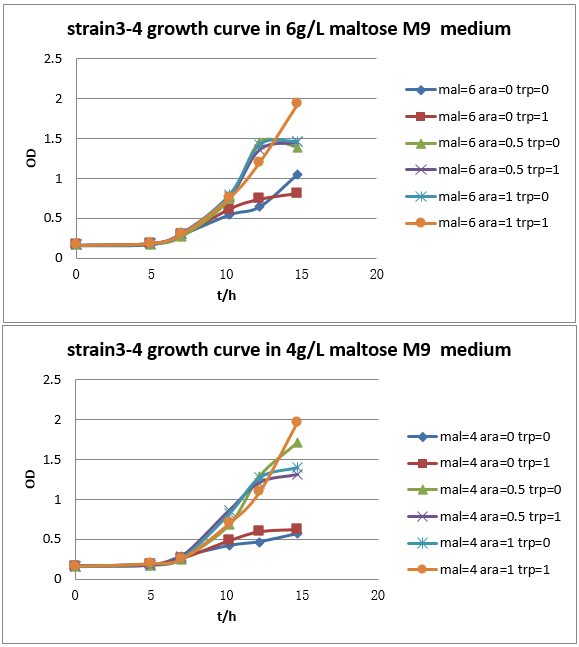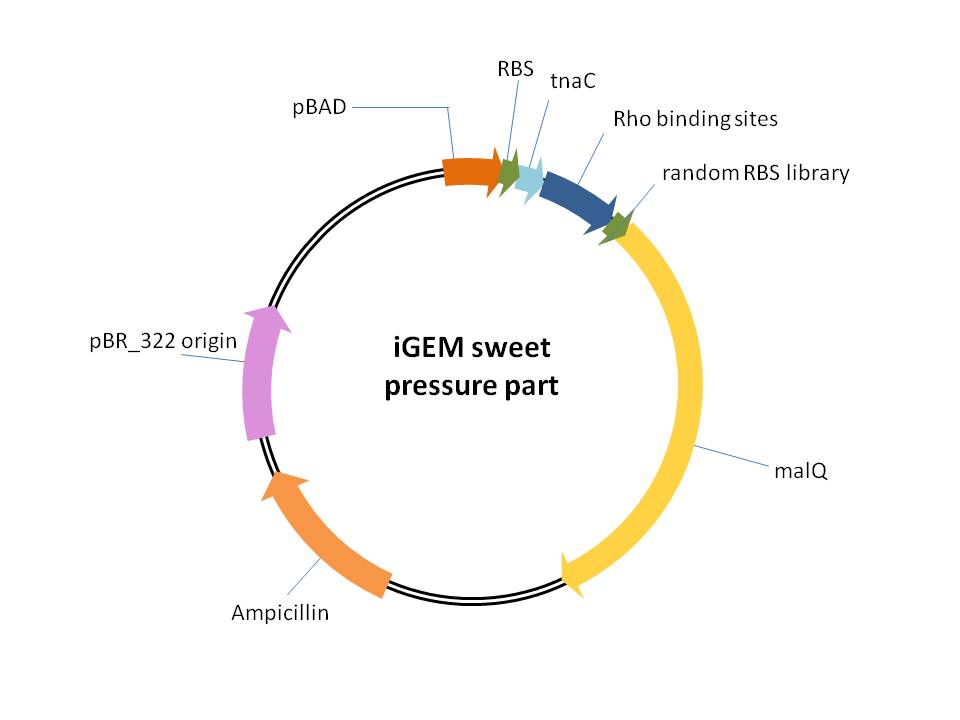Team:Tsinghua-E/Part4
From 2013.igem.org



Part4: THU-E Sweet Pressure Part
This is a plasmid providing selection pressure for the evolution and enrichment of tryptophan overproduction microorganism phenotype by glucose utilization.The selection pressure was based on the tryptophan dependent maltose hydrolase expression which functioned in a maltose-sole carbon source culture condition. It is achieved by cloning E. Coli maltose hydrolase gene (malQ) downstream of our previously constructed tryptophan biosensor which is controlled by the strict araBAD promoter in amalQdeletion strain E. Coli JW3379.A random ribosome binding sequence (RBS) library upstream of malQwere constructed. 48 strains from the library were selectedbased onthe growth difference between maltose and glucose M9 minimal culture condition. Strain 3-4 with the RBS sequence“AAAAAAATGTGCT” was selected and named after sweet pressure part strain.
The performance of the sweet pressure part strain 3-4 was further measured in a tryptophan addition fashion. The colony from LB agar plate was picked up and cultured in M9 medium with 8g/L glucose for overnight. On the next day, seed medium was transferred to fresh M9 medium in 24 well plate with2, 4, 6 and 8g/L maltose as single carbon source, respectively. Initial OD600 was set as 0.16. When OD600 of the medium reached 0.6, 0, 0.5 and 1g/L L-arabinose, 0 and 1mM was added as induction. The growth curve was measured and shown in Figure.3.
It could be found that for conditions of 4 or 6g/L maltose in M9 medium, when inducer arabinose was added as 1g/L, strains induced by 1mM tryptophan obtained much better growth after 12h than the corresponding negative control without tryptophan addition. In other conditions, this trend was not so significant, which inferred that the condition for our sweet pressure part to work must be finely tuned. What is more, we have proved that tryptophan addition greatly inhibited growth of cells. Therefore, the trend of better growth induced by tryptophan addition was very strong proof for the successful construction and function of our sweet pressure part, although it only worked in this particular condition.

Figure.1 Conception illustration of the working mechanism of sweet pressure part

Figure.2 Sweet part performance was measured by the dependent relation between the strain growth rate and the extracellular tryptophan addition in finely tuned M9 culture condition. Mal, ara and trp refer to maltose, arabinose and tryptophan, respectively. The units of them were g/L, g/L and mM, respectively.
 "
"


